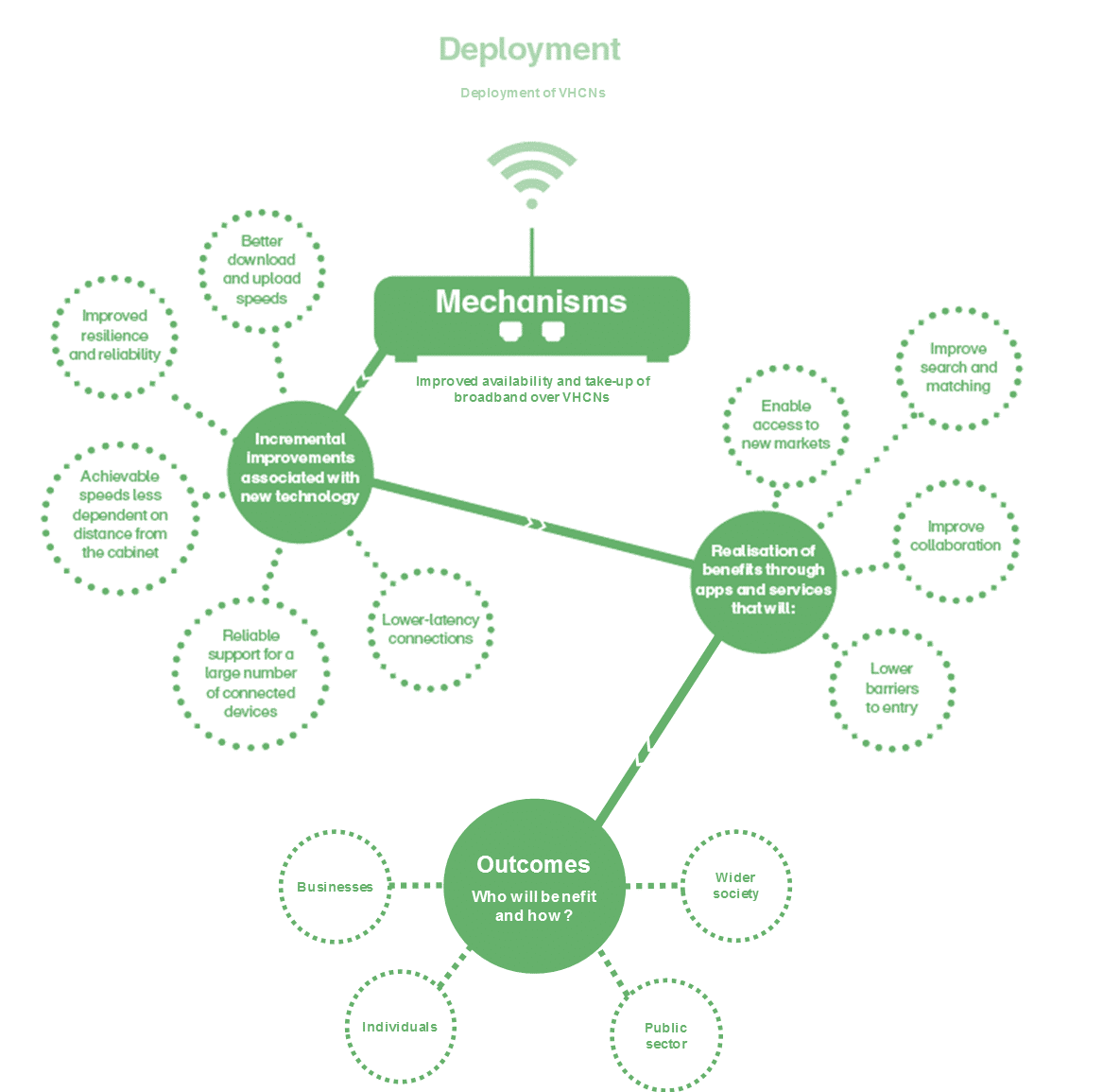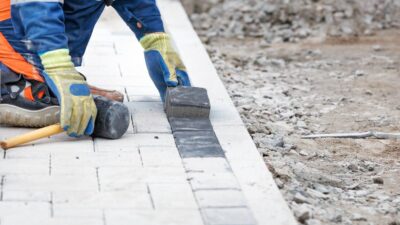Living remotely: the value of being connected
Prior to early 2020, the idea of living remotely might have triggered visions of moving to the northernmost Scottish island, or to the far edges of Alaska, and becoming self-sufficient—retreating to a more primitive lifestyle, away from the demands of modern life and its reliance on technology and the Internet. However, by spring 2020, COVID-19 had forced up to a third of the world’s population into ‘lockdown’, with swaths of people having to live, work and socialise ‘remotely’ such that reliance on technology and being connected via the Internet have never been more important.
In many countries around the world, the message has been clear that ‘those who are able to’ should work from home—keeping that the economy afloat during lockdown and continuing to protect social distancing measures even as some restrictions begin to ease. Those who are able to carry out their work from home can do so only because of well-developed telecommunications infrastructure. Such infrastructure provides workers with the connectivity they need to access the Internet and the wide array of applications and services that enable them to communicate, and cooperate with each other and their clients effectively and efficiently.
Indeed, the benefits of broadband Internet have long been linked to the value of enabling more remote working and a number of other remote activities (such as healthcare consultations over video calls, remote learning, and greater access to public services online).
However, the COVID-19 pandemic and the associated social distancing measures have done more than anything before to accelerate the shift to remote living. We are now seeing first-hand the value of reliable telecoms infrastructure in keeping as much of the workforce as possible productive, and in enabling students to learn despite being stuck at home. Without this infrastructure, the economy would have been even more severely affected, and more people might have refused to comply with the lockdown, continuing to travel to their places of work and thus further increasing the risk of transmission.
While the COVID-19 pandemic was not foreseen (or at best was seen as hugely unlikely), it has illustrated the option value associated with investments in broadband connectivity; the value to society and the economy has been significant.
The haves…
Considering the technical capabilities of the most common forms of broadband connection (Table 1) and the recommended technical requirements of some of the key applications that people are using during lockdown (Table 2), it is clear that for many households working or learning from home (and keeping themselves entertained), the transition will have been smooth.
For example, in the absence of home Wi-Fi network issues, those with a fibre-to-the-cabinet (FTTC) connection should be receiving a service quality that far exceeds the minimum requirements of Skype, Microsoft Teams, Zoom and Netflix, even allowing for some concurrent usage of applications.
Table 1 Technical capabilities of common broadband technologies
| Technology | Download speed (Mbps) | Upload speed (Mbps) | Latency (ms) | Packet loss (%) | Jitter (ms) |
| ADSL2+ | 8–13 | 0.7–0.9 | 17–29 | 0.07–0.29 | 0.6–1.7 |
| FTTC | 24–66 | 5–18 | 11–16 | 0.05–0.19 | 0.2–0.6 |
| FTTP | 70–310 | 10–50 | 7–10 | 0.00–0.09 | 0.1–0.4 |
| Cable | 50–384 | 3–21 | 17–19 | 0.04–0.36 | 1.5–2.2 |
Source: Ofcom (2019), ‘UK Home Broadband performance, measurement period November 2018’, chart data.
Table 2 Recommended technical requirements for some common home-working and entertainment applications
| Application | Download speed (Mbps) | Upload speed (Mbps) | Latency (ms) | Packet loss (%) | Jitter (ms) |
| Skype video call (HD) | 1.5 | 1.5 | <100 | <1 | <30 |
| Skype group video call (7 people) | 8 | 0.512 | <100 | <1 | <30 |
| Zoom video call (HD) | 1.2 | 1.2 | <=150 | <=2 | <=40 |
| Zoom group video call (HD) | 1.5 | 1.5 | <=150 | <=2 | <=40 |
| Microsoft Teams HD Group video calling | 2 | 1 | – | – | – |
| Netflix (HD) | 5 | – | – | – | – |
| Netflix (UHD***) | 25 | – | – | – | – |
Source: Skype: Bandwidth Recommendations; Microsoft: Media Quality and Network Connectivity Performance in Skype for Business Online; Microsoft Teams: Bandwidth Requirements; Zoom: System requirements; Zoom: Meeting and phone statistics; Netflix: Internet Connection Speed Recommendations.
Indeed, large numbers of households throughout Europe will likely have found themselves in this fortunate position. For example, in the EU, 92.8% of all fixed broadband subscriptions are for a connection with an advertised download speed of at least 10Mbps (and 62.7% are for a connection with an advertised download speed of at least 30Mbps).1 Furthermore, in the UK, Ofcom reports that at the end of 2019, at least 54% of customers had signed up to a superfast broadband service (which is defined as providing speeds of 30Mbps and above).2 Average download speeds in the UK were therefore 64Mbps, while average upload speeds were 14Mbps.3
…and the have-nots
However, there are a number of households with slower connections (particularly in terms of upload capabilities), such as those provided over ADSL2+ or earlier generations of fixed broadband technology, or those who usually rely on wireless services from networks that may be under greater stress/contention from the increased demand, thus reducing network performance. These connections may be struggling to meet the requirements of increasingly essential applications, especially with simultaneous usage of a number of applications throughout households.
The number of households likely to be in this position is not insignificant. For example, in the UK, Ofcom estimates that 608,000 premises cannot access a ‘decent’ fixed broadband service (defined by a minimum download speed of 10Mbps and upload speed of 1Mbps).4 In the EU, the latest official figures show that 7.2% of broadband subscriptions were to a service with an advertised download speed of less than 10Mbps.5
These households face the prospect of being unable to work, socialise, or learn effectively from home, as well as being unable to access vital services online. As such, there is a risk that these households could become isolated, and that the disparity will be increased between the digital ‘haves’ and ‘have-nots’.
In this context, some EU governments and regulators may need to consider whether current universal service obligations (USOs) for broadband specify sufficiently high technical requirements to avoid some members of society being left behind and an increasing digital divide. Indeed, many will be required to review their USOs in light of new conditions set out in the European Electronic Communications Code (EECC) that require EU member states to ensure affordable access to ‘adequate’ broadband for all. ‘Adequate’ is defined as a connection that will ‘ensure consumers’ full social and economic participation in society’.6 The lessons from the COVID-19 pandemic and a new expectation about what is needed to work and socialise over home Internet connections might now play a role when member states decide what they consider to be ‘adequate’.
As shown by in Table 3 below, some existing broadband USOs7 currently specify minimum download and upload speeds that are clearly insufficient to meet the needs of some of the key applications discussed above. Furthermore, several do not appear to specify any minimum requirements for upload speed or other key performance metrics or quality-of-service provisions, which may be important for ensuring reliable access to important communication services such as videoconferencing.
Table 3 Broadband USOs
| Country | Minimum download speed | Minimum upload speed | Additional quality-of-service provision specified? |
| Belgium | 1Mbps | not specified | V |
| Croatia | 1Mbps | not specified | X |
| Finland | 2Mbps | not specified | V |
| Latvia | not specified | not specified | X |
| Malta | 4Mbps | not specified | X |
| Slovenia | 4Mbps | 512Kbit/s | V |
| Spain | 1Mbps | not specified | V |
| Sweden | 10Mbps | not specified | X |
| UK | 10Mbps | 1Mbps | V |
Arguably, going forward, all households should have the opportunity to access connections that provide the minimum necessary download speeds (and upload speeds, latency, jitter and other relevant key performance metrics and quality-of-service provisions) to support the use of the applications and services that have emerged as ‘essential’ to social and economic interaction during the crisis. Such services are likely to continue to be important in the ‘new normal’ that we can expect going forward. Ensuring that USOs are well defined is one way of supporting the objective to ensure that all households can access adequate connections.
You want more?
Notwithstanding those currently struggling to get access to even a decent broadband connection, many household connections appear to be holding up well even in the absence of widespread access to very-high-capacity broadband networks (VHCNs)—networks that could provide speeds of up to 1GB per second, and for which full-fibre, DOCSIS 3.1, and 5G could be the main delivery technologies.
With current connections (largely) holding up, why all the fuss from governments, policymakers and telecoms companies to push for increased investment in and availability of these next-generation networks?
Such questions are easy to ask of experience goods, where quality or value are difficult to observe in advance and can only be ascertained upon consumption. This is particularly true where our current connection speeds seem to be sufficient to meet current needs. However, current broadband connections are only sufficient for now, based on the current applications and services available, which themselves are limited by the capabilities of those connections.
By no means does this suggest that VHCNs do not have the potential to bring significant additional benefits to businesses, individuals, public service providers (such as local authorities), healthcare systems and wider society.
The benefits of greater availability and take-up of VHCNs (such as fibre to the home and 5G) were considered in detail in a report by Oxera for the UK Broadband Stakeholder Group (BSG). The framework that we developed in that report demonstrates that it is the improved functionality of these networks that is key to realising value.
In particular, the value of VCHNs comes from the emergence of applications and services that exploit the incremental technological and service-quality improvements of VHCNs over previous generations. For example, these apps and services bring benefits by improving search and matching, improving collaboration, enabling companies to gain access to new markets, and lowering barriers to entry. More generally, this can be thought of as lowering ‘transaction costs’ within the economy, and doing so can lead to significant benefits (see Figure 1). The increasing digitalisation of services, supported by underlying VHCN networks, will support the development of innovative use cases that will themselves demonstrate the value of VHCNs and encourage take-up of these faster, more reliable networks.
Figure 1 Deployment–mechanisms–outcomes framework

Oxera’s report for Liberty Global on the value of Gigabit connections outlined many of the potential new applications and services that could be enabled by Gigabit connectivity, including those that will enable changes to the way we work, revolutionise healthcare, and enrich social and digital interactions, thereby bringing greater value to end-users and the economy as a whole.
Therefore, while the costs of investment in VHCNs will be large, the benefits that could be achieved in future could be even more significant. If social distancing measures continue to be implemented (and as we consider the threat of potential future pandemics), connectivity will be invaluable, enabling access to a greater array of innovative applications and services that could support even more of the economy to operate productively remotely.
All for broadband and (very-high-capacity) broadband for all?
It is clear that while social distancing measures are in place, access to good connectivity is important to ensure that as many services and activities can continue remotely. However, as discussed above, there is also a very real risk of isolation and a digital divide opening up between the broadband ‘haves’ and the ‘have-nots’, further emphasising the need for reliable and affordable broadband for all.
The need for everyone to have access to an ‘adequate’ broadband connection that will meet minimum requirements to ensure ‘full social and economic participation’ in society is clearly set out in the EECC,8 and ensuring that this is ‘affordable’ will be even more important in the context of any recession that will inevitably emerge following the COVID-19 outbreak.
However, there also remains a clear case for moving from ‘good’ to ‘great’ in terms of increased connectivity, given the significant improvements in the technology, applications and services that could be enabled by VHCNs. These improvements have the potential to lead to large benefits for public health, business productivity and private utility, and to drive economic recovery.
The potential for significant benefits are reflected by clear policy ambitions at national and regional level (for example, the EU wants 100% coverage of 100Mbps by 2025, with ‘a pathway to 1Gbps’,9 and the UK has set a goal of Gigabit networks for all by 2025).10 However, realising these ambitions remains a significant challenge.
As such investments will be extremely costly, the commercial viability of any solution will depend on the ability of investors to make a return on the investment. This will be a particular concern for investment in more rural areas, where investment costs per premises will be higher and potential demand (the number of homes and businesses) lower. Therefore, leaving the achievement of policy targets entirely to ‘the market’ and private investors may not be enough. There remains a role for government support to ensure that those areas where private investment is not feasible do not get left behind, and government funding and incentive schemes will be helpful in this regard (providing these can be provided without breaching state aid rules).
Furthermore, where private investment is the driver of roll-out, regulatory certainty will be key to allowing investors to assess the expected lifetime returns of their investment with confidence and make a compelling business case for the investment. For example, the risk of future price regulation will be of particular concern for incumbent operators, and, by extension, other investors in Gigabit broadband networks.
Therefore, regulators and SMP operators need to open a productive dialogue to understand the exact costs and risks that the operators are facing, and then take these into account when designing any future regulatory intervention to ensure that this will not undermine investment. Regulatory frameworks should adequately capture investment risks and strike the right balance between the interests of investors, access seekers and end-users.11
Now, more than ever, the value of high-capacity broadband for all is evident, and regulators and governments will need to continue to prioritise policies to support the necessary investments in new communications infrastructure for all.
1 European Commission (2019), ‘Digital Agenda Scoreboard’. Figures reported for June 2019.
2 Ofcom (2020), ‘Connected Nations 2019 UK Report’, 18 March, p. 18. Ofcom defines ‘superfast’ as ‘A data service that delivers download speeds of at least 30 Mbps’.
3 Ofcom (2020), ‘UK home broadband performance, measurement period November 2019 – The performance of fixed-line broadband delivered to UK residential consumers (technical report)’, 13 May, p. 3.
4 Ofcom (2020), Connected Nations Update: Spring 2020, 13 May 2020, page 2.
5 European Commission (2019), ‘Digital Scoreboard’, indicator: Share of fixed broadband subscriptions >= 10Mbps – Advertised download speed (data for June 2019).
6 Article 84 and Annex V of the European Electronic Communications Code (EECC).
7 Introduced under the existing legislative framework (Directive 2009/136/EC):
8 Article 84 and Annex V of the European Electronic Communications Code (EECC).
9 European Commission (2016), ‘Communication from the Commission to the European
Parliament, The Council, The European Economic And Social Committee and the Committee of the Regions, Connectivity for a Competitive Digital Single Market – Towards a European Gigabit Society’, 14 September.
10 The Conservative and Unionist Party (2019), ‘Get Brexit Done: Unleash Britain’s Potential: The Conservative and Unionist Party Manifesto 2019, December.
11 Flórez Duncan, F. and Weekes, M. (2020), ‘Incentivising Investment’, InterMedia, 48:1, pp. 32–36, International Institute of Communications, April.
Download
Related

Spatial planning: the good, the bad and the needy
Unbalanced regional development is a common economic concern. It arises from ‘clustering’ of companies and resources, compounded by higher benefit-to-cost ratios for infrastructure projects in well developed regions. Government efforts to redress this balance have had mixed success. Dr Rupert Booth, Senior Adviser, proposes a practical programme to develop… Read More

Is dynamic pricing an ambush or advantage for consumers?
The debate as to whether or when dynamic pricing is fair and reasonable continues, and there are even calls for it be banned. Dynamic pricing has been in the news recently, with backlash from fans trying to secure a ticket to see Oasis in concert. You will have experienced dynamic… Read More

